If you look around the internet, you’ll find many quotes about dreams and goals and what it takes to get there. You don’t have to search hard to find boatloads of people who think they’ve drilled down to the one secret ingredient to achieving all your ambitions in life, whether that key element is passion, determination, planning, or something else.
However, one thing that needs to be discussed more is how your ambitions in life need infrastructure. What do we mean by that? Infrastructure means you have time set aside in your life to break down your larger ambitions into smaller, more manageable tasks. If you were thinking of becoming an architect or a nurse, you’d look at years of knowledge acquisition and skill-building chopped up into many separate exercises. Taking control of your money is no different in that sense. It will take a while, and that’s why you need action items accomplished over time built into your plan.
You might still be asking yourself, Why not just do it all at once? Why not get a budget in place, improve your credit, and bulk up your retirement savings in one big push? The reality is that truly taking command of your resources and putting your income to work for you will never be accomplished in just one or two sittings. On top of that, it’s something you want to take your time with. Taking your time to do all the necessary steps to brighten your financial outlook will make all the difference.
The Freedom 30 program was designed with all this in mind. By following this 12-month schedule of money mastery tasks, you can give yourself a less stressful and more rewarding path forward.
How it works
The Freedom 30 program is designed to provide a schedule of weekly money well-being mini-projects to complete on your way to greater financial freedom by the end of the year.
The approach is simple: You set aside 30 minutes each week to perform a specific task aimed at improving your financial standing. The tasks will be laid out for you in themed months, so all you need to do is follow the instructions. Make sure to choose a time each week in which you can really put all distractions aside and focus intently. Try to create as calm and pleasant an atmosphere as possible to make the process go smoothly.
Let’s get started!
January: Be a Real Goal-Getter
The tasks for January are all centered around establishing goals. After all, you can’t get to a better place without first knowing where that place is. While it might initially seem odd to start with something that isn’t moving you forward immediately, zeroing in on goals will influence everything else you’re doing throughout this extended exercise. Doing this now will make all the hard work you put in feel like it’s moving you closer to that ideal life you fantasize about.
Week 1 Project: Blue sky thinking
We’ll start off with an easy one – and a fun one at that! Use this first half-hour to really think about what you want in life. Set aside for a moment what you’re “supposed to do” or what anyone else expects from you. This is just for you!
If you’re stuck with this question, consider starting with what your best life looks like in a year, in 5 years, and in your retirement. It’s vital here to not limit yourself. This is your life we’re talking about, so now’s the time to dream big. Maybe you just want less stress in your financial life in the near term. In a few years, you might want to buy a home or move into a nicer place. Your ultimate retirement might involve traveling regularly.
Ultimately, it’s up to you to decide what will create the most happiness and contentment in your life. Remember: use this opportunity to focus on what you desire most. Everything you do after this in the program was created to help you get those things.
Spend the first 15 minutes of your time this week envisioning your ultimate success in life. For the final 15 minutes, take those aspirations and put them into one of the following categories:
• Short-term goals (1 year or less)
• Mid-long-term goals (1 to 3 years)
• Long-term goals (More than three years)
It’s more than acceptable to have more than 1 goal in each category. For example, while it may not seem like the most fun goal to go after, having a beefed-up emergency fund in place within the next 12 months is a terrific target to set.
Takeaway: By the end of this week’s assignment, you should have a list of your goals and when you want to achieve them.
For next week: Start thinking about how you’ll get a firm grasp on the cost of each of your goals.
Week 2 Project: Get more specific
Now that your goals are in place, it’s time to find out how much it’ll cost. Use this time to research the targeted monetary amount for each goal. For instance, if one of your goals is to save for your child’s college expenses, examine how much tuition and other costs are projected to be in the year when your young one is slated to start their higher education. It can be challenging to land on an exact figure simply because many variables are involved: will your child attend a private or public school, how much will they get in scholarships or other financial aid, how much can your child contribute from a job, etc.
Don’t worry about being perfect with your projection. The main thing at this point is to have a general idea of what will be required for each of your goals. You can always adjust the monetary requirements for each goal as more information becomes available. The key at this point is understanding what constitutes meaningful contributions toward your targets.
Your next step is calculating how much you’ll need to contribute each month toward your goals to stay on track. The simple version of this exercise is to divide the total amount you’ll need for your goal by the number of months until the anticipated achievement. Remember that for goals with a longer timeframe, you may be able to harness the power of time to add a little interest or investment growth to the amount you’re setting aside out of your monthly income.
Takeaway: Alongside your goals and timeframes, you should come out of this week’s efforts with a specific amount you want to save every month for each goal.
For next week: If you haven’t already, consider putting together a spreadsheet or written chart of your goals with several columns for filling out specific information for each objective.
Week 3 Project: Understand your savings options
Not all savings options for your goals are created equal. In fact, depending on the timeframe of your ambitions, you may want entirely different savings vehicles. Here are some common accounts in which to stash your cash, grouped by goal timeframe.
Short-term goals
• Savings account
You earn a small amount of interest for the money you put into the account.
• High-yield savings account
You typically earn a higher return than you would on a regular savings account, but the tradeoff is that you tend to have more significant withdrawal restrictions.
• Cash management account
You get a hybrid of a checking and savings account with options for investing and earning at a higher rate than a regular
savings account.
• Money market account
You deposit money into an account with a higher variable rate the more money you keep deposited.
Mid-term goals
• Certificate of deposit (CD)
You get a higher yield than you would for a regular savings account by agreeing to leave your deposited money in the account for a set amount of time.
Long-term goals
• Brokerage account
You have an account for investing your money in various stocks, bonds, mutual funds, or exchange-traded funds.
• 401(k)
You get a tax-advantaged retirement account offered to you by your employer.
• Individual Retirement Account (IRA) or Roth IRA
You have a tax-advantaged retirement account that you control on your own.
Takeaway: This week should conclude with you having chosen the type of savings accounts for each of your goals.
For next week: Reach out to your financial institution once you know which type of savings vehicle you’d like to utilize.
Week 4 Project: Boost your odds of success
As discussed above, reaching your goals takes a plan and a variety of tools and actions to help you achieve your ambitions. Here are some tips to increase your chances of reaching your target amounts successfully.
Start by prioritizing your goals. You might not think this matters if you’re contributing the full amount to each of your goals, but think about both the fat times and the lean times. If you get a bonus or an unexpected windfall, it’s wise to have a plan ahead of time for which of your goals you’d like to speed up your timeframe. On the flip side, if you experience a loss in income or a sudden unexpected expense, knowing which accounts you feel more comfortable withholding funds from for a while can help you weather a difficult time with less stress.
Remember not to beat yourself up. There will likely be times when you aren’t able to put away as much as you’d like. If that’s the case, set a reminder for yourself to revisit where you’re at in 3 months. That way, you keep sight of where you need to be to reach your goal.
Put your raises toward your goals. When you get a salary or hourly wage increase at work, you tend to think about having nicer things or taking fancier vacations. While treating yourself a bit is always part of a solid financial plan, so too is using that extra income to speed up your goal attainment.
Frame your spending decisions in terms of whether it’s getting you closer to or farther away from what matters most to you. For example, if you want to upgrade your perfectly fine vehicle to a newer, sleeker model, ask yourself if that will ultimately add the most joy to your life in the big picture.
Having a goal buddy along for the ride can help tremendously with keeping your focus and enduring challenging times. Just having a supportive, nonjudgmental person to talk with about your victories and setbacks can help you remove the anxiety of getting where you want to be.
Takeaway: When this week’s session is over, you should feel greater confidence in your ability to achieve true money mastery.
For next week: Start thinking about some of the unnecessary expenditures you think do the most damage to your goal attainment.
The blog post above was shared from BALANCE. For more information and similar resources, click here .





